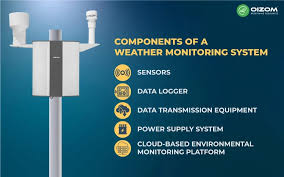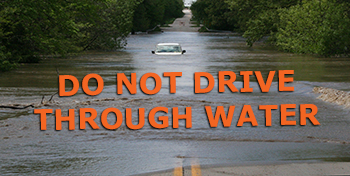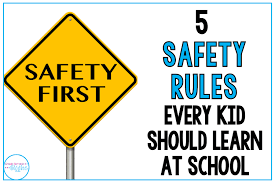The Importance of Weather Monitoring Devices in Today’s World
Weather monitoring devices play a crucial role in keeping us informed and prepared for the ever-changing conditions of our environment. From predicting storms to monitoring air quality, these devices provide valuable data that helps us make informed decisions and stay safe. Let’s explore the significance of weather monitoring devices in today’s world.
Accurate Forecasting
Weather monitoring devices, such as weather stations and satellites, collect real-time data on temperature, humidity, wind speed, and precipitation. This data is used by meteorologists to analyze current weather patterns and forecast future conditions with greater accuracy. By having access to reliable forecasts, individuals and communities can plan ahead and take necessary precautions to mitigate potential risks.
Early Warning Systems
In regions prone to severe weather events like hurricanes, tornadoes, and floods, early warning systems are essential for saving lives and minimizing damage. Weather monitoring devices help detect changes in atmospheric conditions that could lead to these extreme events. By issuing timely alerts based on this data, authorities can evacuate vulnerable areas and implement emergency response plans effectively.
Environmental Monitoring
Besides predicting weather patterns, weather monitoring devices also play a vital role in environmental monitoring. Devices like air quality sensors measure pollutants in the atmosphere, providing valuable insights into the impact of human activities on air quality. This information is crucial for policymakers to develop strategies for reducing pollution levels and improving public health.
Personal Weather Monitoring
Advancements in technology have made it possible for individuals to have their own personal weather monitoring devices. These compact gadgets allow homeowners, farmers, outdoor enthusiasts, and amateur meteorologists to track local weather conditions in real time. By having access to personalized weather data, users can make informed decisions about activities like farming, gardening, or outdoor recreation.
The Future of Weather Monitoring
As technology continues to advance, we can expect even more sophisticated weather monitoring devices that provide enhanced accuracy and precision. From drones equipped with sensors to AI-powered forecasting models, the future of weather monitoring holds great promise for improving our understanding of the natural world.
In conclusion, weather monitoring devices are invaluable tools that help us navigate the complexities of our environment. By investing in these technologies and leveraging their capabilities, we can better protect ourselves, our communities, and our planet from the impacts of unpredictable weather events.
5 Essential Tips for Optimizing Your Weather Monitoring Devices
- Place weather monitoring devices in an open area away from obstructions for accurate readings.
- Regularly calibrate your weather monitoring devices to ensure precision and reliability.
- Protect your weather monitoring devices from extreme temperatures and direct sunlight to prolong their lifespan.
- Check and replace batteries in your weather monitoring devices as needed to maintain functionality.
- Utilize multiple types of weather monitoring devices for comprehensive data collection and analysis.
Place weather monitoring devices in an open area away from obstructions for accurate readings.
To ensure accurate readings, it is important to place weather monitoring devices in an open area away from obstructions. By positioning the devices in a location free from trees, buildings, or other obstacles, you can minimize interference with wind speed, temperature, and other environmental factors. This optimal placement allows the devices to capture reliable data and provide more precise information for better weather monitoring and forecasting.
Regularly calibrate your weather monitoring devices to ensure precision and reliability.
To maintain the accuracy and reliability of your weather monitoring devices, it is essential to regularly calibrate them. Calibration helps ensure that the measurements taken by these devices are precise and consistent, enabling you to make informed decisions based on reliable data. By following a calibration schedule and adhering to manufacturer guidelines, you can enhance the performance of your weather monitoring equipment and increase its effectiveness in providing accurate weather information.
Protect your weather monitoring devices from extreme temperatures and direct sunlight to prolong their lifespan.
To prolong the lifespan of your weather monitoring devices, it is crucial to protect them from extreme temperatures and direct sunlight. Exposure to harsh environmental conditions can not only affect the accuracy of the data collected but also lead to premature wear and tear of the devices. By ensuring that your weather monitoring equipment is shielded from extreme heat or cold, you can maintain their functionality and reliability over time, allowing you to continue benefiting from accurate weather information for an extended period.
Check and replace batteries in your weather monitoring devices as needed to maintain functionality.
To ensure the optimal performance of your weather monitoring devices, it is essential to regularly check and replace batteries as needed. By maintaining functional batteries in your devices, you can rely on accurate and timely data collection, which is crucial for making informed decisions based on current weather conditions. Regular battery checks and replacements help prevent interruptions in data collection and ensure that your weather monitoring devices continue to provide valuable information for forecasting, early warning systems, and environmental monitoring.
Utilize multiple types of weather monitoring devices for comprehensive data collection and analysis.
To enhance the effectiveness of weather monitoring efforts, it is advisable to utilize a combination of different types of weather monitoring devices. By incorporating various devices such as weather stations, satellites, and air quality sensors, comprehensive data collection and analysis can be achieved. Each type of device offers unique insights into specific aspects of the weather, allowing for a more holistic understanding of environmental conditions. This multi-device approach enables better forecasting accuracy and early warning capabilities, ultimately enhancing preparedness and response strategies for various weather-related events.




